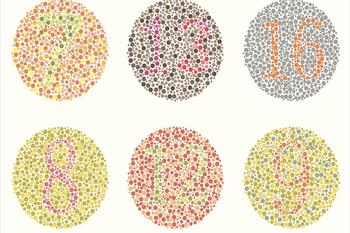Correcting Color Blindness With Glasses
 Millions of Americans contend with color blindness every day; around 8 percent of men and .5 percent of women of Northern European descent. Can you picture what life would be like if you couldn't see the color variations of a beautiful sunset? It's the reality of those living with color blindness. However, advances in technology have led to the creation of special glasses that can correct the disability. The most typical form of the condition, which prevents men and women from distinguishing between specific colors, is red-green color blindness.
Millions of Americans contend with color blindness every day; around 8 percent of men and .5 percent of women of Northern European descent. Can you picture what life would be like if you couldn't see the color variations of a beautiful sunset? It's the reality of those living with color blindness. However, advances in technology have led to the creation of special glasses that can correct the disability. The most typical form of the condition, which prevents men and women from distinguishing between specific colors, is red-green color blindness. "In the retina, there are two types of cells that detect light," author David Turbert explains. "They are called rods and cones. Rods detect only light and dark and are very sensitive to low light levels. Cone cells detect color and are concentrated near the center of your vision. There are three types of cones that see color: red, green, and blue. The brain uses input from these cone cells to determine our color perception."
Please contact SDCB if you are facing vision loss challenges to learn more about our programs and services.
Glasses that correct color blindness give Fargo man a bright new lease on life



